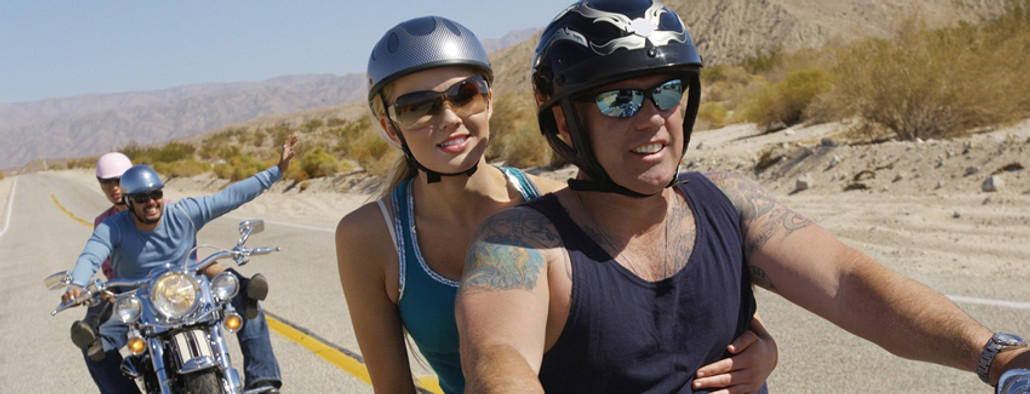Lane splitting legal in California; a look at safety studies
Posted by Ben Baker on Nov 23rd 2016
| Lane splitting is something that comes up before state legislatures regularly. |
|
|
| Wikipedia defines lane splitting as "riding a bicycle or motorcycle between lanes or rows of slow moving or stopped traffic moving in the same direction. It is sometimes called lane sharing, whitelining, filtering, or stripe-riding." |
|
|
| So far lane splitting in every state except California, according to Lane Splitting Is Legal. The Golden State made it legal this summer and the full law takes effect Jan. 1, 2017. As of this writing, the specific rules were still being written. Lane splitting is common in Europe. |
|
|
| A majority of states have at least considered lane splitting bills in the state house. Arizona Governor Janice Brewer said she shot down the bill a few years ago in The Grand Canyon State for several reasons. For one, the law allowed lane splitting only for one year. Shehad problems with the sunset provision and how drivers would be educated about a temporary law. She also cited safety, without providing any studies showing it is not safe. |
|
|
| SAFETY |
|
|
| Both sides like to point to the Hurt Report, named for the main author of the study, Professor Harry Hurt. The problem, for both sides in the debate, is the Hurt report never looked at lane splitting. People who use the report to support either side of the debate are spinning the study to fit their own needs. |
|
|
| The second study is the Motorcycle Accidents In Depth Study (MAIDS) report from Europe. This study does mention lane splitting, which is called lane filtering over there. Strictly on the raw numbers, it shows lane splitting is safer. However, when put into context, the study doesn't show much one way or another. It looks at riders being struck from behind when stopped in traffic and when filtering. It also looked at 26 accidents of this kind. |
|
|
| The Ride Advice says said the MAIDS lacks a lot of details. Only 26 wrecks were considered for the report and one of the study countries did not allow lane splitting. Where did the wrecks happen, the writer asks. |
|
|
| A report from California looked at 8,000 crashes over 15 months and specifically looked at lane splitting. "LSM (Lane Splitting Motorcyclists) were less likely to be rear-ended by another vehicle (2.7%) than were other motorcyclists (4.6%)." |
|
|
| Based on that, it does appear lane splitting is safer for bikers than not. |
|
|
| However, the study also shows that bikers who did lane splitting appeared to be safer than other riders. "LSM were more likely to be wearing a full-face helmet than other motorcyclists (79% and 64%, respectively) and less likely to be wearing a novelty helmet (1.9% and 4.1%, respectively). Motorcyclists who were not lane-splitting were more likely to wearing a 1/2- or 3/4-helmet (23%) than LSM (13%). The prevalence of alcohol use was lower among LSM (1.3%) than it was among other motorcyclists (3.3%).The proportion of motorcyclists that were unlicensed was moderately lower among LSM (18%) than among other motorcyclists (22%)." |
|
|
| At the same time, the report adds lane splitters were MORE likely to run into someone else. "LSM, on the other hand, were much more likely to have rear-ended another vehicle (36.4%) than were other motorcyclists (14.9%) due to lane splitting." |
|
|
| Steve Guderian also did a study on lane splitting. He says lane splitting is safer because California's traffic proves there are fewer rear-end crashes. |
|
|
| The California study take-away is, "Lane-splitting appears to be a relatively safe motorcycle riding strategy if done in traffic moving at 50 MPH or less and if motorcyclists do not exceed the speed of other vehicles by more than 15 MPH." |
|
|
| At the time, California law did not say if lane splitting was legal or illegal. At least one case that went to court appears to side with lane splitting being legal. The lane splitting study was a joint effort between the University of California Berkley and the state patrol. |
|
|
| The National Highway Transportation and Safety Administration wants more research. Mr. Guderian agrees. |
|
|

